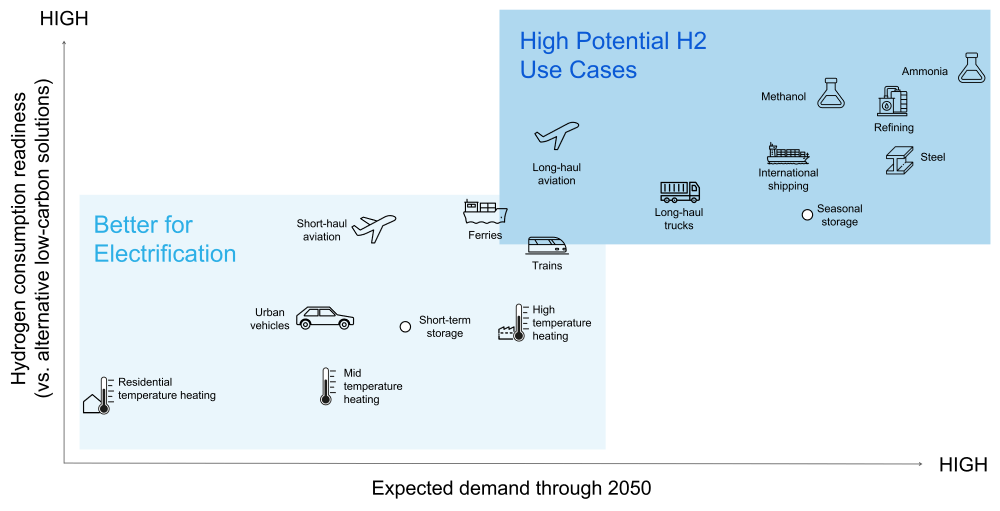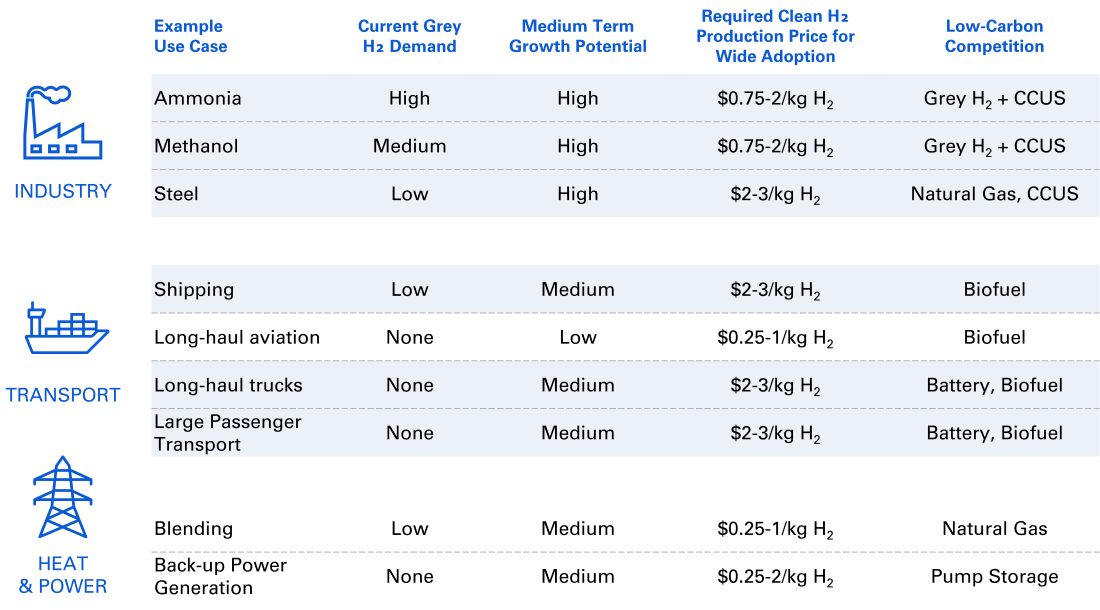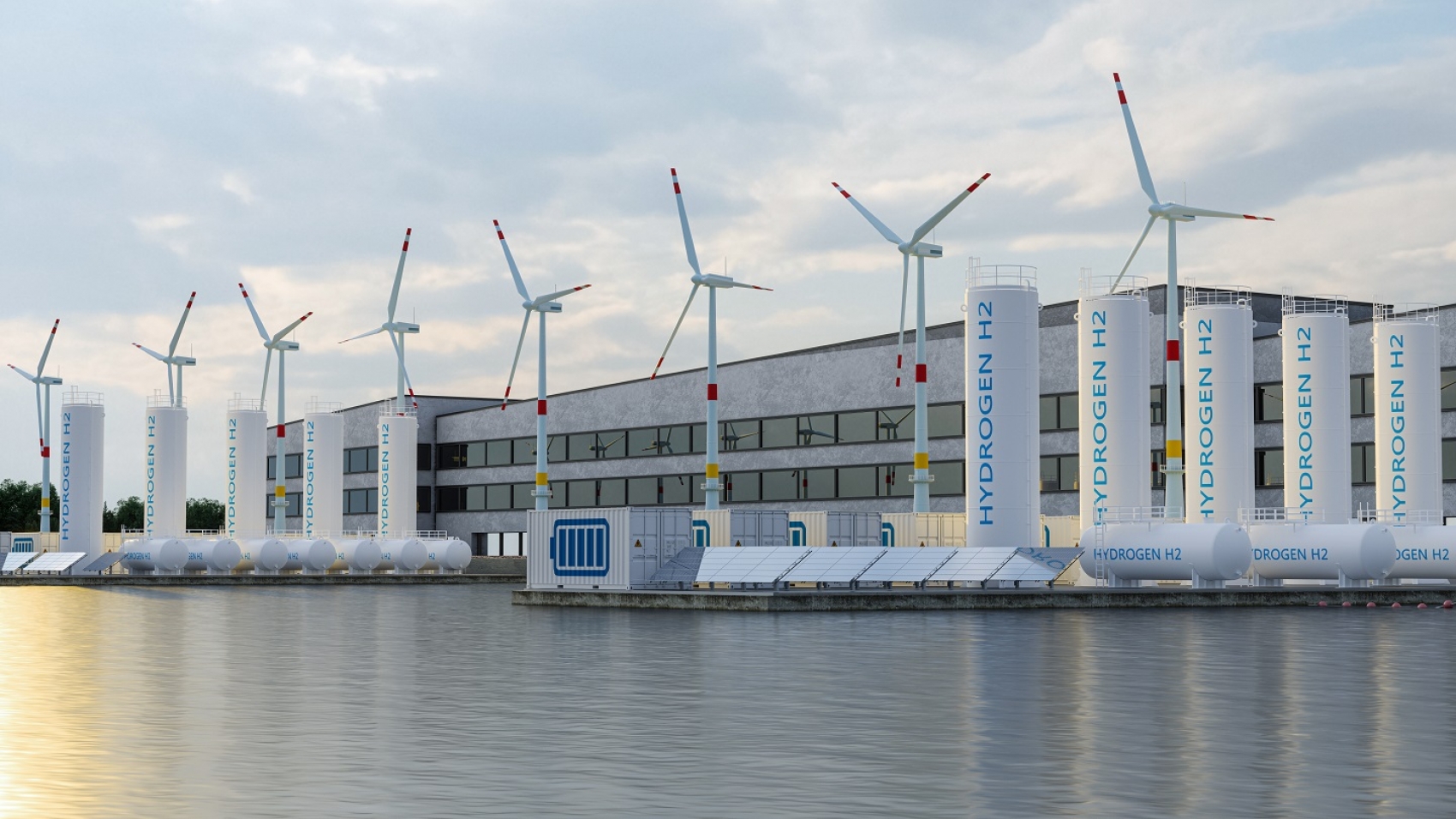The potential of clean hydrogen as a sustainable fuel source has earned significant attention and investment in recent years, and it is rightfully being seen as a key component in the global energy transition. However, in order to truly realise its value, we need to think more holistically about the total clean hydrogen value-chain.
There has been much debate around the role and potential for hydrogen to drive our collective net zero future. However, we believe that these discussions need to pivot from ‘whether we use clean hydrogen’ to ‘how we enable clean hydrogen systems’?
Clean hydrogen will be a critical tool in the drive towards limiting global warming to below 1.5 degrees Celsius. Whilst not relevant for sectors where electrification has much stronger potential, it will be critical to abate the use of gas and coal in key industries such as ammonia production and steel.
Shuayb Ismail – Associate Partner, Xynteo, discusses three key elements to designing, implementing, and scaling a commercially viable clean hydrogen ecosystem.
High potential hydrogen vs. electrification use cases to 2050 (Exhibit 1)

For hard-to-abate sectors like ammonia and steel production, the ability to deliver their net zero transition plans will rely on the production of clean hydrogen (that is hydrogen produced with low or zero emissions). Already, plans are being adopted within many management strategies to phase out the use of fossil fuels through hydrogen, and this is being reflected in energy-use forecasts across the globe. As a result, the global hydrogen market is anticipated to grow at a 6.5% CAGR over the next several decades to reach 614 million metric tonnes per annum and represent 12% of total energy use.
However, we will only be able to achieve this scale of consumption and corresponding emissions reductions if we can ensure the commercial viability of our future clean hydrogen energy systems. We believe there are three critical steps to doing this.
Stimulating demand from day one
The first critical step should be identifying and aggregating demand. Clean hydrogen is a unique energy fuel with specific use cases and cost profiles across a selection of industries. It is not a silver bullet for everyone. Creating a clean hydrogen energy system requires us to identify and engage appropriate clean hydrogen customers, and hydrogen-based product consumers, who appeal to the cost profile offered by the producer.
The other consideration is that hydrogen production is an economy of scale play, and therefore aggregating local industrial demand across multiple sectors is not just a way to de-risk the project but also a way to reduce average costs. Key anchor customers can be large ammonia plants, DRI steel furnaces, or refining centres. Defining and co-ordinating industrial clusters should be a critical step to creating commercially viable clean hydrogen ecosystems, including by taking advantage of economies of scale to lower production and transport costs.
Clean hydrogen opportunity and costs comparison across various sectors (Exhibit 2)
Sectors highlighted in blue represent potential hydrogen growth use cases.

Hydrogen demand by sector - 2050, MTPA Hydrogen (Exhibit 3)

Getting the location right
The second critical step is choosing an optimal production location that that will lower overall transport costs. This will be key to ensuring clean hydrogen remains cost-viable for the high potential clean hydrogen use cases identified above.
Rightfully, the price of electricity inputs is often called out as a key cost factor for clean hydrogen. Looking at green hydrogen, our levelised cost modelling using procured quotes from suppliers across global supply-chains demonstrates that current production costs could be as low as $3-5/kg H2 depending on your price of renewable electricity. In fact, renewable electricity accounts for 60-80% of the total production cost for green hydrogen.
However, when considering the total landed cost of green hydrogen for the consumer, transport becomes a more important factor. Above 100km, conversion and transportation can account for 60-80% of the landed cost of hydrogen to the consumer. Further, conversion and transport can also lead to up to 40% energy losses.
Collectively, these factors emphasise the need for off-take locations and transport to be considered before any hydrogen production plant is constructed. It is much easier to bring the hydrogen plant to the steel mill, than it is to move a pre-established steel mill to a new hydrogen plant. For these reasons co-location between production and consumption to lower overall conversion and transport costs becomes crucial to creating commercially viable clean hydrogen ecosystems.
Being In the driver’s seat
The third critical step concerns the roles for industry, government, and finance. Given the complexity of the change required, we believe clean hydrogen ecosystems must be driven by industry, with government and finance as important enablers.
Creating commercially attractive hydrogen business cases, that work today without needing significant policy change, will be key to accelerating the production and consumption of clean hydrogen. Where there is a requirement to boost a business case through policy change, then the onus should be on industry to take the lead on guiding governments on the support they need (for example, introducing tariffs on grey imports to protect emerging green steel markets).
The same is true with finance where industry should work with finance collaboratively rather than treating them purely as arms-length bankers. Finance can be important conveners across the value-chain to bring together the right players with aligned incentives to enable viable business cases, and it is up to industry to guide funds on the support they need to maximise their returns.
Clean energy is a team sport, and in our experience, we have seen government and finance as willing team players if they can be directed. However, this direction needs to come from industry who alone can calculate the business case and requirements to make clean hydrogen commercially viable.
Ultimately, compared to other energy systems, the important factor is to remember that clean hydrogen is an ecosystem play that requires special consideration around demand, the physical positioning of the value-chain and leadership from industry. Xynteo has played a leading role in helping organisations across the globe unlock the potential of such models, and we know it is possible to create these in a way that achieves both impact and commercial returns. We will need to do this if we are to realise the potential of clean hydrogen to drive the global energy transition.
If you would like to discuss more about your hydrogen ambitions, wherever you sit across the hydrogen value-chain (inputs, production, transport, or consumption), please get in touch.
Stay up to date on Xynteo by following us on social media. LinkedIn I Twitter
Or contact us to find out how we can help your leaders and organisation create people and planet-positive growth.

